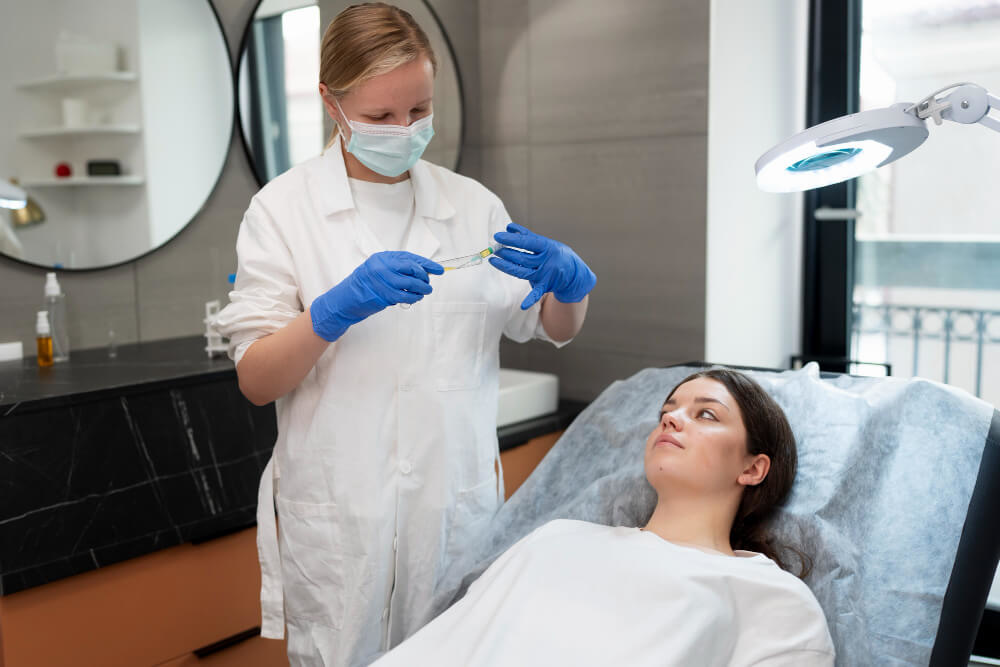Why Preventative Care is Your Best Investment in a Long, Healthy Life
For most of modern history, our approach to health has been largely reactive. We wait for symptoms to appear, a diagnosis to be made, and a treatment plan to be prescribed. This model, while essential for acute illness and injury, often overlooks the most powerful tool we have for ensuring a long and vibrant life: prevention.
Preventative care flips the traditional script on its head. Instead of waiting for problems to arise, it focuses on proactive strategies to maintain wellness, identify risks early, and stop diseases before they can take hold. This approach is not just about avoiding sickness; it’s about actively building a foundation of health that supports you for decades to come. Embracing preventative care is the single most effective investment you can make in your future self.
This shift in perspective from treatment to prevention is the cornerstone of longevity and optimal aging. It empowers you to take control of your health journey, transforming you from a passive patient into an active participant. By understanding its principles, you can work with healthcare providers to create a personalized strategy that maximizes your healthspan, not just your lifespan.

What Are the Different Types of Preventative Care?
To fully grasp the concept, it helps to understand that prevention isn’t a single action but a multi-layered strategy. Healthcare experts typically categorize it into three distinct levels, each playing a unique role in your long-term wellness journey. Understanding these categories can help you see where your own efforts fit into the bigger picture.

What is primary prevention?
Primary prevention is perhaps the most intuitive form of care. Its goal is to prevent a disease or injury from ever occurring in the first place. This is the most proactive stage, focused on eliminating risk factors and bolstering your body’s natural defenses. When you think of a ‘healthy lifestyle’, you are largely thinking about primary prevention.
Key examples include childhood and adult immunizations, which protect against infectious diseases like measles, the flu, and tetanus. It also encompasses lifestyle choices like maintaining a balanced diet rich in nutrients, engaging in regular physical activity, and avoiding tobacco products. Public health measures, such as sanitation systems and policies that promote safe work environments, are also powerful forms of primary prevention that benefit entire communities.

What is secondary prevention?
Secondary prevention aims to detect and address a disease in its earliest, most manageable stages. The illness may already be present, but it likely hasn’t produced any noticeable symptoms yet. The core idea is to catch it early through screening, which can lead to more effective and less invasive treatments, ultimately improving the outcome.
This is where routine health screenings become critically important. Common examples include regular blood pressure checks to catch hypertension, mammograms to detect early-stage breast cancer, and colonoscopies for colorectal cancer. Pap tests for cervical cancer and blood tests to screen for high cholesterol or pre-diabetes also fall into this category. Secondary prevention serves as a vital safety net, identifying hidden risks before they escalate into serious health crises.

What is tertiary prevention?
Tertiary prevention comes into play once a disease or condition has already been diagnosed and is established. The focus here is not on curing the disease, as that may not be possible, but on managing it to slow its progression, prevent complications, and improve the individual’s quality of life. It’s about helping people live well with a chronic condition.
This level of care involves ongoing management and rehabilitation. For someone with diabetes, tertiary prevention includes regular blood sugar monitoring, medication management, and dietary counseling to prevent complications like nerve damage or kidney disease. For a heart attack survivor, it would involve cardiac rehabilitation programs, medication adherence, and lifestyle changes to prevent a future event. This stage is about mitigating the impact of an existing illness and maintaining function for as long as possible.

How Can You Actively Participate in Your Own Prevention Plan?
While clinicians play a crucial role, the most important person on your preventative care team is you. The daily choices you make have a profound and cumulative impact on your health trajectory. Actively participating in your own wellness means moving beyond the annual check-up and integrating healthy habits into the fabric of your life.
This proactive stance is about empowerment. It involves educating yourself, listening to your body, and making conscious decisions that align with your long-term health goals. It’s a continuous process of learning and adapting, building a lifestyle that not only prevents disease but also enhances your daily energy, mental clarity, and overall sense of well-being.

What does a preventative lifestyle look like?
A preventative lifestyle is built on several key pillars that work together to support your body’s systems. It starts with nutrition. This doesn’t mean restrictive dieting, but rather a focus on a balanced intake of whole foods like fruits, vegetables, lean proteins, and healthy fats. A nutrient-dense diet provides the essential building blocks your body needs for cellular repair, immune function, and energy production.
Regular physical activity is another non-negotiable component. The goal is to find movement you enjoy and can stick with, whether it’s brisk walking, swimming, cycling, or strength training. Exercise strengthens your cardiovascular system, improves insulin sensitivity, builds strong bones, and is a powerful mood booster. Consistency is more important than intensity.
Quality sleep is often the most underrated pillar of health. During sleep, your body undergoes critical processes of repair, memory consolidation, and hormonal regulation. Chronic sleep deprivation can disrupt these processes, contributing to a higher risk of obesity, diabetes, and cardiovascular disease. Aiming for 7-9 hours of quality sleep per night is a powerful preventative measure.
Finally, effective stress management is crucial. Chronic stress floods your body with hormones like cortisol, which can lead to inflammation and suppress the immune system. Incorporating practices like mindfulness, meditation, deep breathing exercises, or simply making time for hobbies can mitigate the harmful effects of stress and promote mental resilience.

What Should You Expect from Your Doctor in Preventative Care?
Your relationship with your primary care provider is a partnership. In a preventative framework, their role extends beyond treating sickness to acting as your guide, strategist, and trusted advisor in health. You should expect them to not only address your immediate concerns but also to look ahead, helping you identify and mitigate future risks.
A good preventative-focused doctor will take a comprehensive history, including your personal health, family history, and lifestyle factors. They will use this information to recommend a personalized screening schedule. These recommendations are often based on established guidelines from professional organizations that provide a framework for preventive care based on age, sex, and risk factors.
This partnership requires open communication. Be prepared to discuss your lifestyle, including diet, exercise, stress levels, and sleep habits. The more information your provider has, the better they can tailor their advice. They should be a source of education, helping you understand your risks and motivating you to make positive changes.

How is Technology Changing Preventative Medicine?
We are living in an exciting era where technology and advanced diagnostics are revolutionizing preventative medicine. We can now look beyond basic metrics and gain a much deeper, more precise understanding of an individual’s unique physiology and risk profile. This allows for a level of personalization that was previously unimaginable.
These advanced tools empower clinicians to move from a generalized approach to a highly specific one. Instead of relying solely on population-wide statistics, they can identify subtle imbalances and risk markers long before they would appear on standard tests. This early warning system is a game-changer for preventing chronic diseases, particularly complex ones like cardiovascular disease and metabolic disorders.

What advanced tests can reveal hidden health risks?
Cardiovascular health is a prime example of where advanced diagnostics are making a difference. For decades, the standard lipid panel was the primary tool for assessing heart disease risk. While useful, it doesn’t tell the whole story. Today, a more advanced cardiovascular risk assessment in primary care can provide a much more detailed picture.
These advanced panels look at more than just total cholesterol. They measure the number and size of lipoprotein particles, which are the ‘vehicles’ that carry cholesterol through the blood. Understanding these nuances is critical, as some particles are far more dangerous than others. This is why a deeper clinicians guide to interpreting ApoB and Lp(a) is so valuable for practitioners. These specific markers, ApoB and Lp(a), are powerful independent predictors of heart disease risk that are missed by standard tests, allowing for much earlier and more aggressive intervention.

How does gut health connect to overall wellness?
Another frontier in preventative medicine is the growing understanding of the gut microbiome. The trillions of bacteria living in your digestive tract are now recognized as a critical component of your overall health. This complex ecosystem influences everything from your immune system and mood to your metabolism and nutrient absorption.
An imbalanced gut microbiome, or dysbiosis, has been linked to a host of chronic conditions, including autoimmune diseases, obesity, and even mental health disorders. Importantly, it also affects how your body processes medications. Understanding the influence of the gut microbiome on pharmacokinetics helps explain why different people respond so differently to the same drug. Analyzing and optimizing gut health is becoming a key strategy in personalized preventative care.

Why is Preventative Care a Global Priority?
The principles of prevention extend far beyond individual health; they are a cornerstone of effective public health systems worldwide. When a population is healthier, the burden on the healthcare system decreases, economies become more productive, and overall quality of life improves. This is why leading global health organizations champion preventative strategies.
The focus on prevention is a sustainable, long-term solution to the growing challenge of chronic disease. By investing in programs that promote healthy lifestyles, increase vaccination rates, and ensure access to early screenings, governments can save countless lives and billions of dollars in treatment costs. The World Health Organization emphasizes that preventive health care is essential for achieving universal health coverage and building resilient societies.
This global effort relies on a well-educated and prepared public health workforce. Investing in the people who implement these strategies is just as important as the strategies themselves.

What resources are available for public health and provider education?
To effectively deliver preventative care, healthcare professionals need continuous training and access to the latest evidence-based practices. Public health is a dynamic field, and staying current is essential for tackling emerging health threats and implementing effective community-wide programs. This requires a robust infrastructure for professional development.
National organizations play a critical role in providing these educational opportunities. For instance, the Health Resources and Services Administration supports a network of public health training centers across the country. These centers work to strengthen the technical, scientific, and managerial skills of the public health workforce.
Similarly, the Centers for Disease Control and Prevention offers a vast array of resources. Through its quality training and educational programs, the CDC provides health professionals with the knowledge and tools they need to respond to public health challenges. These initiatives ensure that the people on the front lines of prevention are equipped for success.

How Do You Create a Personalized Prevention Plan?
Building your own preventative care plan may seem daunting, but it can be broken down into a few manageable steps. It’s a journey that begins with knowledge and is sustained by consistent action. Your goal is to create a sustainable framework for health that is tailored to your unique body and life circumstances.
Start by gathering information. The first step is to understand your baseline. This involves knowing your personal and family health history. Are there conditions like heart disease, diabetes, or certain cancers that run in your family? This information is a critical clue to your potential genetic predispositions and helps guide which screenings are most important for you.
Next, find a healthcare provider who you trust and who is aligned with a preventative philosophy. This person will be your partner in this process. Work with them to establish your baseline numbers through a comprehensive check-up and appropriate screenings. This gives you a starting point from which to measure progress.
Finally, translate this knowledge into action. Based on your risk factors and health goals, work with your provider to prioritize 2-3 lifestyle changes. Don’t try to overhaul everything at once. Maybe you start by focusing on adding a 30-minute walk to your daily routine and incorporating one more serving of vegetables each day. Small, consistent steps build momentum and lead to lasting change. Regularly check in with your provider to review your plan, celebrate successes, and make adjustments as needed. Prevention is not a one-time event; it is the ongoing practice of caring for your future self.
Investing in preventative care is the most profound act of self-care. It’s about shifting your focus from fixing what’s broken to cultivating a state of enduring wellness. By embracing proactive strategies, partnering with knowledgeable clinicians, and taking ownership of your daily choices, you can add not just years to your life, but life to your years.
Frequently Asked Questions

How can I effectively explain the concept of "risk reduction" versus "prevention" to a patient?
When discussing chemoprevention, it is crucial to use clear analogies to frame the conversation accurately. Explain that taking a chemopreventive agent is like wearing a seatbelt; it does not guarantee you won’t get in a car accident, but it significantly reduces the risk of a severe outcome if one occurs. This helps manage expectations and clarifies that the goal is to lower their statistical risk, not to provide a foolproof shield against cancer.
To make the benefit more tangible, translate the relative risk reduction into absolute numbers based on the patient’s specific risk profile. For example, you can state that their personal 5-year risk of developing cancer might decrease from 4% to 2%, which represents a 50% relative reduction. Presenting the data this way makes the abstract concept of risk modification more concrete and empowers the patient to make an informed decision.

What are the best strategies for initiating a conversation about chemoprevention with an eligible but unaware patient?
The most effective approach is to integrate the topic seamlessly into routine preventative care discussions, such as during an annual wellness visit or a mammogram follow-up. Frame the conversation positively by saying, "Given your overall health profile, there is an additional, evidence-based option we can consider to be proactive about your long-term health." This positions the discussion as a personalized opportunity for enhanced care rather than an alarming new risk factor.
After this introduction, use validated patient decision aids or simple infographics to explain the core concept and potential benefits. Follow up with open-ended questions like, "What are your initial thoughts on taking a medication to lower your future cancer risk?" This method respects patient autonomy and immediately establishes a foundation for shared decision-making.

How should I approach a patient’s concerns about long-term side effects versus the statistical benefits?
Begin by explicitly acknowledging and validating the patient’s concerns, as this builds trust and shows you are taking their quality of life seriously. Present the data transparently, discussing the absolute risk reduction and the number needed to treat (NNT) to prevent one case of cancer. Juxtapose this information with the specific incidence and severity of the most common side effects so the patient can weigh both sides.
To address their hesitation, propose a mutually agreed-upon trial period for the medication, for instance, three to six months, with dedicated follow-up appointments to assess tolerance. This approach makes the decision feel less permanent and more collaborative, empowering the patient to try the regimen with the assurance that you will be monitoring them closely. Reassure them that the plan is flexible and can be stopped if the side effects outweigh the perceived benefits.
Discover the most comprehensive functional medicine training, longevity training, and biohacking certification programs designed specifically for healthcare professionals, medics, and clinic owners who want to master regenerative medicine protocols and anti-aging therapies.







